Matador Network's Blog, page 860
May 12, 2020
Future of movie theaters post covid

Earlier this week, Disney CEO Bob Chapek confirmed that the highly anticipated theatrical release of the live-action remake of Mulan would move ahead as planned on July 24. Spirits bolstered by solid ticket sales at the newly reopened Disney park in Shanghai, Chapek told CNBC, “We very much believe in the value of the theatrical experience overall to launch blockbuster movies,” and that there is a “pent-up demand” for movies to return to theaters. These words sound like the final plea of a desperate man afraid that, post-pandemic, the first societal institution to go will not be the restaurant or the bar — it will be the movie theater.
There’s hardly better proof that the age of the movie theater is over than the fact that Chapek’s own company announced today that it will release the original production of Hamilton starring Lin-Manuel Miranda on Disney+. Disney originally planned to release the movie in theaters on October 15, 2021. Not only is it skipping the highly anticipated theatrical release, but it’s also premiering a full 15 months early on Disney+ on July 3, 2020, when many people will still be sheltering in place.
Tickets to the original cast production of Hamilton once went for $849, so make no mistake, people would have paid to see the filmed production in theaters for a small fraction of the price — at least in a pre-pandemic world. The decision to skip what could have been a lucrative theatrical release, and release it over a year early on a subscription streaming platform, not even on a paid video-on-demand service, is turning the entire system on its head. With no end in sight to the pandemic and the resulting shutdown on societal institutions most people took for granted, the announcement proves streaming is bigger business than ever — and could be the death knell for the movie theater.
Streaming in the time of COVID-19
Surveys since the onslaught of COVID-19 have found that streaming is where the money is, at least while people are sheltering in place: According to a press release from JustWatch Insights, streaming on Netflix has increased 332 percent since March 17, while Neiman found that in the first two weeks of March the time people spent on streaming services grew by 34 percent.
ESPN planned to release it’s 10-part Michael Jordan documentary The Last Dance during the NBA playoffs, which were obviously canceled. It began airing April 19, but the early release date ended up delighting sports starved basketball fans, blessing ESPN with a much-needed ratings boost. Box office flops like Invisible Man and Onward exploded in popularity once they hit on-demand streaming platforms like iTunes.
But no one is more successful in the coronavirus era than Universal, the studio launched Trolls World Tour for on-demand streaming on April 10, bypassing a theatrical release. With kids and parents stuck at home together, the film was a mega-hit, garnering around $100 million in rental fees alone since April 10, CNN reported.
The move inadvertently triggered a feud with AMC theaters, which said it would ban all Universal titles from its theaters “effective immediately.” Universal later promised that the movie would also be released in theaters, once they could safely open again, but AMC shot down the suggestion, writing that it would ban “any movie maker who unilaterally abandons current windowing practices absent good faith negotiations between us, so that they as distributor and we as exhibitor both benefit and neither are hurt from such changes.”
AMC looks especially petty in this situation. Most movie theaters remain closed, and Chapek himself admits limited-capacity screenings will prove challenging for movie theaters on Friday and Saturday nights, typically their most lucrative time slots. In other words: Theaters need the money, and AMC just burned a bridge that could have brought in big business once the pandemic passes.
The future of movie theaters
Chapek seems to be counting on movie theaters reopening to long lines of moviegoers eager to experience the nostalgia of the big screen. Maybe he’s right. Other blockbusters that had to push their theatrical releases due to COVID-19 — like No Time to Die, Wonder Woman 1984, Fast and Furious 9, and Black Widow — are counting on it (for now). There’s also a chance that the obsession with streaming services will end once families can return to the outside world, and their time no longer has to be filled with an infinite Netflix queue. Who knows? The humble drive-in could even make a true comeback.
What seems more likely, though, is that it will slowly begin to dawn on the viewing public that the same movie-going experience can be had at home, where the kids are already comfortable, the snacks are cheap, and you only have to pay for one “ticket” instead of four. And while it’s true that people will be eager to get out of the house (a surge in cruise bookings should prove that), people might still be especially wary of taking their families to theaters, sticky with popcorn butter and fingerprints, with a cleaning process that historically leaves much to be desired. Even with limited capacity-screenings, it might also be irresponsible for studios to encourage people to gather in close proximity at movie theaters, where it would be difficult to enforce social-distancing rules and still turn a profit, or make sure people wear masks for the duration of a two-hour film.
The uptick in streaming entertainment could signal that people are simply ready to enjoy in the safety and comfort of their homes, where they don’t have to worry about spreading or contracting a virus that very well might experience a comeback — and can save money to boot. Movie theaters will be missed — but when this pandemic is over, perhaps people will realize they were becoming obsolete anyway. 
More like this News Tom Cruise, Elon Musk, and NASA to shoot a movie in space
The post Hamilton’s unexpected early Disney+ release proves movie theaters are in trouble appeared first on Matador Network.

LA County stay-at-home orders

Life in Los Angeles will not be returning to normal any time soon, according to County Public Health Commissioner Barbara Ferrer. The city’s stay-at-home orders will “with all certainty” be extended through July, she said at a Board of Supervisors meeting on Tuesday, according to a report in the Los Angeles Times.
While other parts of California have seen a decrease in cases, the Los Angeles area is still experiencing increases in both new daily cases and deaths.
Loosening regulations at a faster pace would require a “dramatic change to the virus and tools at hand,” Ferrer said at the meeting. “Our hope is that by using the data, we’d be able to slowly lift restrictions over the next three months.” For that to proceed any more rapidly, a massive uptick in testing and a slowdown in spreading of the virus would be absolutely necessary.
Not everything in the Los Angeles area is shuttered, however. Beaches are set to reopen Wednesday for “active recreation” — defined as activities like surfing, swimming, running, and walking. Sunbathing and general lounging on the beaches will not be permitted, according to the report. Hiking trails and open spaces including parks and golf courses are open currently, as are limited curbside commercial services. 
More like this Wildlife This pandemic will devastate Africa’s wildlife unless we rally right now
The post Los Angeles County to extend stay-at-home orders through July appeared first on Matador Network.

Southwest 2020 summer sale

We’re all eager for travel restrictions to lift so we can go explore again, and this summer, it will be very easy on the wallet thanks to Southwest Airlines’ summer sale.
On Tuesday, May 12, 2020, Southwest Airlines launched a month-long sale to encourage summer travel, with one-way domestic fares ranging from $49 to $99.
Some of our favorite routes include:
Denver to Albuquerque for $49
Los Angeles to Tucson for $49
Dallas to Kansas City for $49
New York to Chicago for $79
Atlanta to Denver for $99
In a statement, Southwest Airlines Senior Vice President and Chief Marketing Officer Ryan Green said, “We’re all eager to move again in a new chapter that feels more familiar, and Southwest is giving customers the freedom to dream and the inspiration to confidently recapture the magic of travel.”
To further encourage bookings, Southwest is doubling frequent flyer points for travelers who purchase tickets before August 31, 2020.
The offer runs through June 12 and is valid for travel between May 26 and August 31, 2020. You must book at least 14 days in advance, the sale excludes travel on Friday and Sundays, and Memorial Day weekend is a blackout date.
To find the best deal, you can search by city on Southwest’s sale page. 
More like this News The future of air travel is uncertain, but here’s what it might look like
The post Southwest just launched a summer sale with flights as low as $49 appeared first on Matador Network.

How to turn your house into a hotel

After weeks of staring at the same four walls, it’s natural to daydream about a luxurious escape. So we reached out to hospitality experts from beachside resorts, luxury hotels, and elegant country houses around the world to learn how we can make our homes feel as well-appointed and inviting as an upscale hotel. Their tips and tricks are quick and easy to do — but deliver big results.
That’s because the art of hospitality meets both physical needs — food, water, shelter — and emotional needs like comfort, relaxation, aesthetic beauty, and order. Great hospitality cultivates the emotional states we desire by fulfilling our needs, anticipating our desires, and appealing to all of our senses. These are skills we can practice at home.
Savoring a beautifully arranged breakfast in bed under crisply ironed sheets transforms a familiar bedroom into a luxury suite. A certain playlist evokes happy hour in Bangkok or sunset in Jamaica, making an ordinary work-from-home shift a little more interesting. A perfectly chilled cocktail with a fresh kick of lime tastes just refreshing on the couch as it does on the white sand beaches of Kenya. The scent of sandalwood and a soothing milk bath bring a Hawaiian spa experience home.
These calming rituals, transformative tips, and little luxuries are easy and affordable ways to spice up your staycation and create a relaxing retreat.
1. Transform your bedroom into a luxury suite
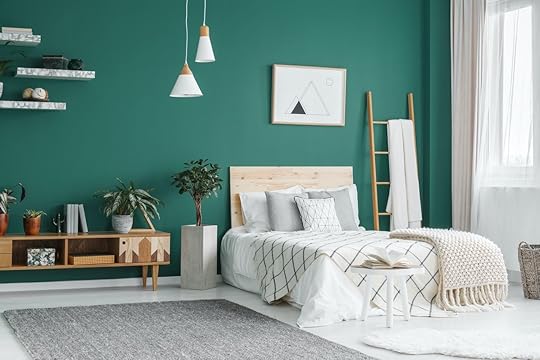
Photo: Photographee.eu/Shutterstock
Creating a restful room is easier than you think. The first steps don’t cost a dime.
“Declutter,” recommends Global Project and Technical Manager Christina Low of StayWell Holdings. “Hotel rooms often feel luxurious because of the sense of space. You can even move a few things around or change the orientation of the room so you feel like you’re sleeping somewhere new.”
Hotel suites look organized and streamlined, but they feel so soothing because housekeepers quietly appeal to our other senses too. Blackout curtains block out noise and light so we can rest easy. Towels, bathrobes, and duvets are fluffy and soft, inviting us to curl up and stay awhile.
To take it to the next level, spritz your sheets with scented water (lavender is a favorite) and iron them before making the bed. Upgrading your bedding can also have a dramatic effect.
“Invest in high thread count sheets, and add a mattress topper to your bed,” says Low. “A quality mattress topper is often the secret to how amazing many luxury hotel beds feel.”
“Smell is another important sense to focus on,” adds Marine Berard, Rooms Division Manager at Anantara Bazaruto Island Resort, located off the coast of Mozambique. “Opening your windows and cleaning your home will help you get a nice, fresh smell. You may add some oil diffusers as well, especially in the evening.”
And don’t forget about taste. Hotels excel at anticipating guests’ wants and needs, which often include a cool drink and a little something sweet. Treat yourself by turning off your phone, grabbing a good book, and implementing your sense of taste into a restful evening routine.
“Before going to bed, take some time to prepare a turndown in your bedroom,” suggests Berard. “Dim the lights, put a small chocolate on your pillow, prepare a bottle of water next to your bed, tidy your clothes a little, place your slippers next to your bed. These little touches will change your night.”
2. Create a signature drink

Photo: Odua Images/Shutterstock
Nothing says vacation like a cocktail. Take your mixology game to the next level with tips from the pros.
For a refreshing drink that’s popular on the coast of Kenya, try a Dawa cocktail, the signature drink of Hemingways Watamu. The chilled vodka, muddled lime, and honey concoction is served ice cold with a sugared rim. The ingredients are available at the average grocery store and Kazungu, the hotel’s mixologist, demonstrates how to make it online.
For a taste of Hawaii (and a bit of a technical challenge) try a mai tai. To recreate this iconic cocktail recipe at home, “methodology is key” says Oswaldo Rabago, Assistant Director of Food and Beverage at Halekulani and Halepuna Waikiki.
“First, pour the orgeat syrup, orange curacao, simple syrup, lime juice, Bacardi Gold, and Bacardi Select in your glass,” explains Rabago. “Pack with crushed ice, then float with Lemon Hart 151 Rum.”
You could create a classic, like the perfect negroni. Or to create your own signature drink, search online for recipe inspiration or try a cocktail subscription box. These kits include all the little extras that make a mixed drink special, including flavored syrups, mixers, and garnishes.
3. Make dinner an event
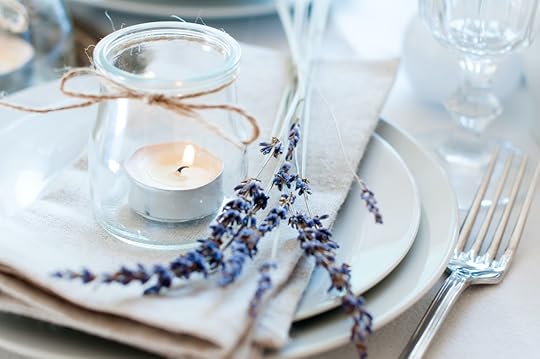
Photo: Daria Minaeva/Shutterstock
After weeks of cooking and eating at home, it’s easy to get stuck in a rut. But a few simple decorating tricks and a little genteel scavenging can make a home kitchen almost as special as the chef’s table at a buzzed-about hotel restaurant.
Sofie Nilsson of Dorsia Hotel and Restaurant knows a thing or two about setting a spectacular table. The Gothenburg, Sweden, hotel’s colorful, opulent interior — think Alice in Wonderland meets French regency — elevates even the simplest meal. Contrast and candles can help recreate the property’s decadent table settings at home.
“Find your most beautiful glasses, cutlery, and porcelain,” she says. “It doesn’t matter if they don’t match. Take a cloth and make them shine. If you have linen napkins, iron them to perfection. You can also use a kitchen towel and fold it nicely after ironing. Go outside (mind the social distancing) and find flowers, branches, or other plant materials to put in a vase. Support your local restaurants and order takeaway. Now you can light some candles, plate the food nicely, and enjoy your dinner.”
Now is the time to open that bottle of wine you’ve been saving for a special occasion. It turns even a simple take-out dinner into an event.
“Any white or rosé wines, sparkling wines, or light reds are great for pairing with spring dishes, which I tend to think of lamb, ham, and fowl as the main proteins and fresh vegetables such as spring peas, fennel, turnips, carrots, Brussels sprouts, and asparagus,” says Jon McPherson, winemaker for South Coast Winery Resort and Spa and Carter Estate Winery and Resort in California.
You don’t even have to cook to make a meal extraordinary. Uncork a few bottles of wine (ideally a white, a red, and/or a blush) and host a mini wine tasting. Then support your local cheese and butcher shops and assemble a charcuterie board. Wendy Higgins, General Manager of The Lodge at Columbia Point in Richland, Washington, has a few pairing suggestions.
“With a nice, bold Cabernet Sauvignon or blend, I would choose a cheddar, gruyere, gouda, or a parmesan-style cheese, along with some salami,” says Higgins. “If I am serving a Chardonnay or maybe Chenin blanc, a nice brie would be a good addition. Fresh seasonal fruits, dried fruits, and pickled vegetables — and you have to have some chocolate for the red wine. A loaf of crusty sourdough bread and selection of crackers round out your board.”
4. Book a spa day

Photo: George Rudy/Shutterstock
You don’t have to leave home to savor a spa day. Loma de Vida Spa & Wellness at La Cantera Resort & Spa in San Antonio, Texas, hosts online webinars featuring sessions on nutrition, resiliency, and stress management. It’s also surprisingly simple to recreate a spa-like atmosphere at home. The first step is often the hardest.
“Start by turning off your cell phone,” says Kamala Nayeli, Director of Spa and Wellness at Halekulani and Halepuna Waikiki. “Next, choose a tea to help calm the body, such as a chamomile blend, hibiscus flowers, ginseng, or licorice. Select an essential oil for the diffuser to freshen up your space and elevate your ambiance. Sandalwood is a calming scent that will relax your mind and instantly transport you to the heavenly island of Hawaii. Other scents I suggest would be lemon for an energy boost or eucalyptus for an overall aromatic healing experience.”
Once you’ve decided on a mood, set up a designed relaxation space. Bathrooms are popular, but you can also transform the corner of a bedroom or living room with a few simple additions. Customize your space using the sights, sounds, and scents that appeal to you.
“Create a spa or relaxation corner with scented candles, diffusers, and live plants,” suggests Portia Ntsholo, Spa Manager at the Royal Livingstone Hotel by Anantara in Zambia. “Have a jug of fresh water with lemon, mint, and apple slices in the living room to hydrate. Put on some relaxing background music.”
For a quick treatment, Nayeli suggests wetting two hand towels, infusing them with a few drops of essential oils, and warming them in the microwave for 30 seconds. Placing one on your neck and one over your eyes provides instant relaxation. If you have more time, try a bath.
“I find a warm bath with a few drops of essential oils and Epsom salts to be most relaxing,” she says. “You can even add one to two cups of coconut milk to nourish and rehydrate the skin.”
5. Be transported by a playlist

Photo: Aila Images/Shutterstock
Sound has a powerful effect on our moods. But the work of most hotel DJs, sound designers, and music directors flies under the radar. We often don’t notice their creations at all — we just appreciate how the space makes us feel.
We can work similar magic at home. If there’s a destination you love, sampling popular or traditional music from that city, region, or country can be an easy way to feel transported. Acoustic guitar or subdued percussion infuse a space with quiet energy while subtle nature sounds like trickling water or soft birdsong relax and soothe us.
To make it even easier, pick a playlist from a pro and let your escape begin. Try the AlmaLusa Morning playlist from AlmaLusa Baixa/Chiado hotel in Lisbon, Portugal, with your morning tea or coffee. It features pop and jazz from Elton John to John Coltrane.
Scotty B., Music Director at Avani+ Riverside Bangkok Hotel crafted a Work From Home playlist to get you through the workday. Crank up his Korean pop-infused K-Tunes mix or the Mamacita: Ladies’ Night Special Playlist when you want to kick back.
The Sounds of Bluefields features the wind and waves guests hear outside the property on Jamaica’s south coast. Proceeds from Spotify listener credits are donated directly to Bluefields Bay Villas staff.
6. Decorate like a pro

Photo: Africa Studio/Shutterstock
If you can’t travel to your favorite region, you can echo it in your home decor. To make redecorating easy, many paint and home improvement stores offer pick-up services. If you’re in a financial position to do so, artwork, textiles, and even furniture can be shipped right to your door. If buying new furniture is not in your budget right now, you can a lot just with color palettes and even found objects.
If you prefer sun-washed desert hues, keep things subtle. Focus on shades of bleached bone and ochre and the earthy spectrum that runs from dusky purple and terra cotta to the palest sand. Accent with natural, and inexpensive textures, like smooth wood, warm copper, and cacti, and succulents for a pop of green. For a touch of whimsy, you could purchase the palm tree wallpaper that adorns The Scott Resort & Spa in Scottsdale, Arizona. Or you could save money and get a potted palm from a nursery.
To create a Provencal atmosphere that highlights historic accents and a calming color palette drawn from nature, take design tips from Arielles Gordes, La Bastide. The elegant clifftop property is located in the French village of Gordes.
“Dark cherry wood furniture with the palest shades of cream, olive green, or yellow walls combined with antique-looking art and artifacts will create a suitably 18th century palatial feel. Decorate with floral cottons in red and green to complete your romantic Provencal-palace design,” says General Manager Madeleine Munier. You can even touch things up with low-cost, but lovely, herbs. “Add small bouquets of lavender around the house to help transport your senses to Provence,” adds Munier.
If you covet Italian luxury, bold is better. Think vivid color, strong lines, opulent chandeliers and lush fabrics like velvet. Trust your instincts.
“Be brave and play with colors,” recommends Valentina de Santis, third generation owner of Lake Como’s Grand Hotel Tremezzo. ”Don’t be worried about mixing styles — it is the best way to give a strong personality to your rooms.”
If you’re feeling indecisive, look inward for guidance. Laura Coburn, Director of Serenity at Inns of Aurora in New York, says that decorating according to your dominant dosha (a term that sums up a unique mix of physical, emotional, and mental characteristics) can bring balance, focus, and order into your living space.
“Fiery pittas do well with soothing colors, such as blues and greens,” she explains. “Kaphas can balance their natural heavy and dense attributes with bright colors and stimulating artwork. Vata needs warmth and grounding, such as warm wall colors and soft fabrics with some weight.”
7. Cultivate coziness
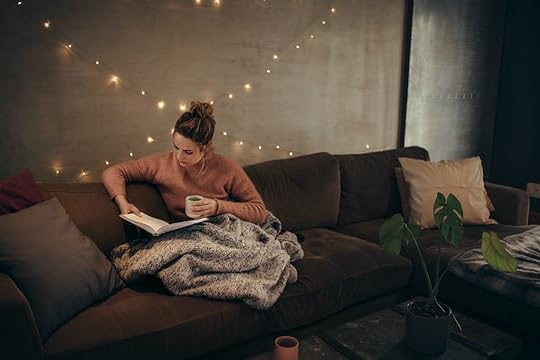
Photo: Jacob Lund/Shutterstock
To create a cozy nest for a soothing staycation, warm and comforting scents, textures, and textiles are key. Luckily, you probably have much of what you need close at hand. This is a deeply subjective practice, so think about the sensations that are most restful for you. Light candles (or a crackling fire in the fireplace or a backyard fire pit, if you’re lucky enough to have either), curl up under a pile of blankets, and relax with a warm drink, a board game, or a favorite film.
If you have the creativity and the time, small decorating projects can elevate nesting to an art form. Combining handmade, antique, and collected items makes a home feel as if it’s been curated, not decorated.
“To ensure your bed looks inviting, bring craft into your home,” suggests Ian Taylor, owner of Kaleidoscope Collection, Homewood Hotel and Spa, and The Bird, Bath. “Get out the sewing machine and make your headboard out of your favorite quilt, or collage together with [a] selection of fabrics. Install dimmers and change lampshades to flamboyant vintage shades.”
Taylor also recommends highlighting collected objects, sculptures, photos, and souvenirs from travels. These mini collections make an attractive tablescape and add interest to a room. They also evoke pleasant memories and serve as conversation starters.
8. Enjoy room service at home

Photo: Dusan Petkovic/Shutterstock
After a long or hard day, it’s perfectly normal to want to indulge a little. And after a string of those days, anyone would crave an escape. To really shake up your routine, reimagine dining at home by combining several pleasures into one hedonistic experience.
“To really feel like you’re having a night away, recreate the decadence of room service by ordering from a meal delivery service and eating a fabulous dinner — and having a glass of wine — in your newly rebooted bedroom,” suggests Christina Low, of StayWell Holdings. “Plating it up on a tray will make for easy removal too when you whisk it back to the kitchen, not to think about again until morning.”
The relaxation doesn’t have to end at dinner. “Add a small trolley or shelf to your bathroom to make a cocktail to enjoy as you relax in the bath,” suggests Kaleidoscope Collection owner Ian Taylor.
Is it a little indulgent? Absolutely. That’s what staying at a top of the line hotel is all about. And if you’re stuck at home for longer than you’d like, that’s exactly the kind of experience you want to cultivate during your staycation. 
More like this Wellness How to stay in shape at home when the gym is closed
The post Creative ways you can make your home feel like a luxury hotel appeared first on Matador Network.

Forth Worth, Texas, barbecue
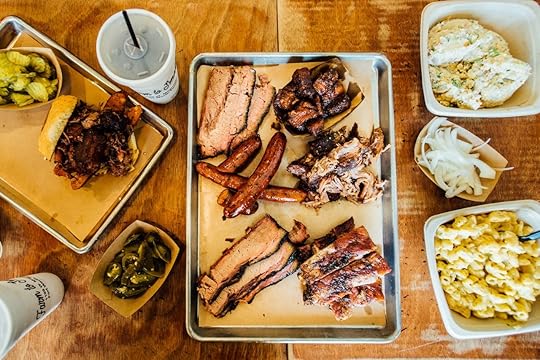
Derrick Walker, owner of Smoke-a-Holics in Fort Worth, Texas, “got bit by the bug” — the barbecue bug — when he was just 12 years old. His grandfather owned an offset smoker, and the night before family gatherings in another town about three hours away, he’d help him load up the smoker with briskets and other cuts.
“First thing in the morning, we’d hit the highway with that thing still smoking, and he would pull over at rest stops and check the fire and then get back on the highway,” Walker recalls.
Walker’s passion for barbecue kept burning, like that fire in his grandfather’s smoker. He’s been cooking barbecue professionally since 2006. He jokes that he started doing “pop-ups before pop-ups were cool” at barbershops, beauty salons, and shopping centers. The lines were so long at his impromptu cookouts that the cops would stop by, ask for a plate, then tell him to find a way to get his crowd under control, “because I would literally have traffic blocked.”
His popularity earned him enough capital to open a brick-and-mortar spot: In August 2019, Walker opened his first brick-and-mortar location of Smoke-a-Holics. But the lines didn’t stop. Walker says that in the nine months he’s been open, he’s only made it to 7:00 PM — closing time — twice before selling out.
When Texas barbecue comes up in conversation, most mention the diehard traditionalists in Dallas and the now-iconic Franklin Barbecue in Austin. Only in the last couple of years has Fort Worth been included in the conversation about the best barbecue in Texas — in the country, even.
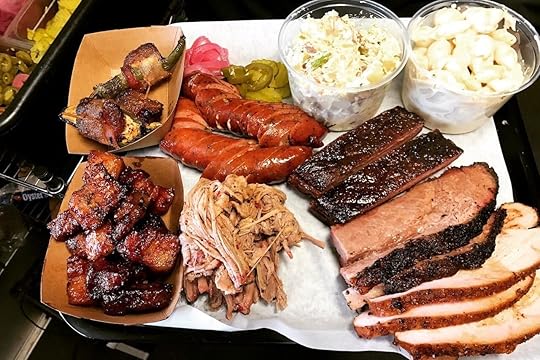
Photo: Panther City
“We’re seeing more people come from the Austin area up to Fort Worth to hit three or four barbecue spots in one trip,” says Chris Magallanes, co-owner of Panther City BBQ. “You wouldn’t have heard of that two years ago. Nobody would come around. We had our old school favorites like Angelo’s, but really the craft barbecue scene in Fort Worth has exploded in the last year and half to two years.”
That doesn’t mean that the pitmasters running the best barbecue restaurants in Fort Worth are new to the game. Magallanes came up in the barbecue competition scene around 2013, but he had been an experienced barbecue home cook for years before. Word spread about his skills, and he started cooking his smoked meats at school carnivals and local breweries. In 2018, he quit his full-time job to focus on barbecue, and in 2019, he and his partner Ernest Morales opened Panther City.
At Panther City, Magallanes takes inspiration from his Mexican heritage to create barbecue dishes with a distinct Tex-Mex twist. One example is the brisket elote, Mexican sweet corn topped with brisket and queso fresco hot sauce and garnished with jalapeno and lime. Magallanes also prepares smoked barbacoa (beef cheek) and uses brisket trimmings to make barbecue tacos. There’s a spicy edge to every dish on the menu at Panther City, including the mac and cheese, which incorporates a tomatillo sauce.
“It’s something that we grew up with and that we’re trying to introduce to the neighborhood,” Magallanes says.
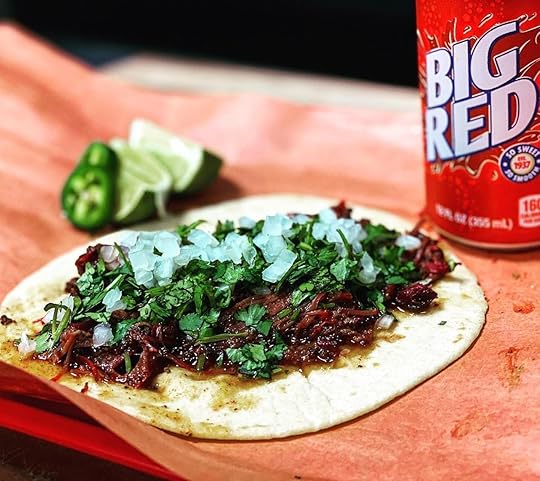
Photo: Panther City BBQ/Facebook
Walker’s approach is a little different: He calls his barbecue style Tex-Soul and guesses he’s probably one of the few pitmasters in Fort Worth to bring that perspective to his food.
“I wanted to stick to my roots,” Walker says. “I didn’t want to do Tex-Mex because it’s trendy. I grew up eating soul food. Soul was a way of life, so I wanted to weave that into my food. We have cornbread, we have pinto beans, collard greens, baked mac and cheese, sweet potato pie, peach cobbler — things that I grew up with.”
Fort Worth’s pitmasters aren’t just bringing an extra level of creativity to their menus. Recently, the burgeoning barbecue city has embraced the so-called craft barbecue movement, which began with Aaron Franklin at Franklin Barbecue in Austin.
Traditional, old-school barbecue has been a staple in Fort Worth for decades at places like Angelo’s and Riscky’s BAR-B-Q, where the menu and cooking methods have stayed mostly the same since the restaurants opened. It’s part of the foundation of communities and social gatherings in the city. Craft barbecue isn’t trying to change that, just help barbecue evolve.
“Historically, barbecue has been cheap cuts of meat, and you just smoke it forever until it’s tender,” Travis Heim, owner of Heim Barbecue, explains. He adds that barbecue was something done on the Fourth of July, fall parties, and community gathers thrown by Southern politicians. “The difference with the newer craft style is that it’s taking really good cuts of meat, like instead of brisket, we’re gonna get a grass-fed prime brisket, and then use the same [cooking] technique that you would at an old school place.”
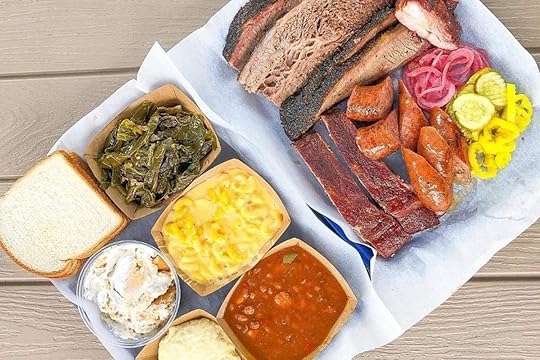
Photo: Smoke-A-Holics BBq/Facebook
Craft has a little bit more panache. The craft barbecue restaurant has more style than the old-school barbecue cafeterias, which are usually more sparse and plain. From the food to furniture, craft barbecue has an eye for design. But as one might expect, there was some pushback against craft barbecue when it first arrived in Fort Worth because its very existence seems to imply that there’s something wrong with the old ways of cooking barbecue.
“When I heard the term craft barbecue, I thought it sounded hipster,” Walker says. “I thought this was so wack, and I thought it was a slap in the face to pitmasters of old.”
Walker now proudly calls Smoke-a-Holics a craft barbecue restaurant. In fact, he says he’s one of the few black pitmasters cooking craft-style barbecue in Fort Worth today. Once Walker got used to the fact that craft barbecue wasn’t going anywhere, he started paying closer attention and realized that there are distinct differences in the styles — especially when it comes to how the food looks, and how it’s served.
“You can go to a barbecue place and the only real option is a styrofoam container with three compartments,” Walker says. “They put your ribs or your chicken into one compartment, then you get your beans and potato salad, but the beans are running into the potato salad, and then you can add raw white onions, and everything is in sloppy sauce.
“Or you can come to my place and you can get a tray with beautifully placed ribs and fatty brisket and more expensive turkey, and the sides are in separate containers, and you have pickled onions and housemade pickles. A lot more work went into that tray.”
The push for more creativity on Fort Worth barbecue menus stems directly from the fact that craft restaurants don’t feel beholden to the old-school traditions that dominate barbecue restaurants in places like Dallas or Austin. Heim feels he has the freedom to create a dish like his Kansas City-style bacon burnt ends (what he describes as a “sweet peppery smokey bacon bite”) in Fort Worth, whereas if other places in Texas did that, “they’ll throw you out of the state.”
The freedom that being released from traditions that dictate barbecue in other states has been revolutionary for Fort Worth’s pitmasters. It’s opened the door to barbecue dishes that you won’t find anywhere else in the country (smoked candied pork belly nestled in a jalapeno and topped with cream cheese and wrapped in bacon at Panther City, and potato skins buried in mac and cheese sauce and topped with brisket at Heim) and let the individuality of each chef flourish. That’s great for them, and better for us, because we get to reap the benefits of their hard work.
“Come through and see the ways the flavors meld — Tex-Mex with the South Texas influence, and the Hill Country and the North Texas influence,” Magallanes says. “The way everything comes together — there’s just a different twist that you won’t see in other places in Texas.”
Where to eat barbecue in Fort Worth
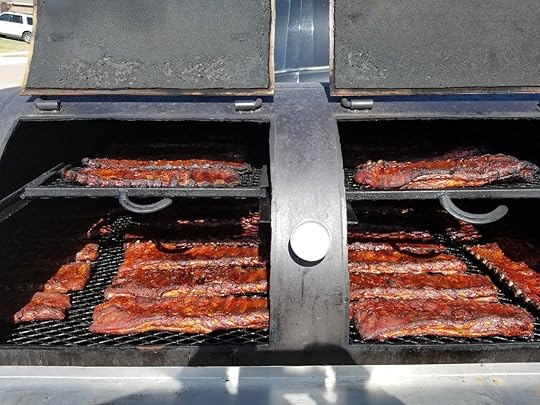
Photo: Smoke-A-Holics BBq/Facebook
Smoke-A-Holics BBQ: Come for what owner Derrick Walker calls Tex-Soul barbecue, with mains like turkey, brisket, and ribs along with sides like cornbread, pinto beans, collard greens, and baked mac and cheese. For dessert, there’s sweet potato pie and peach cobbler.
Where: 1417 Evans Ave Fort Worth, TX
Panther City: A barbecue spot with a distinct Tex-Mex twist. Options include brisket elote (Mexican sweet corn topped with brisket and queso fresco hot sauce), smoked barbacoa (beef cheek), and tacos made with brisket trimmings. The sides have a similar influence, like the mac and cheese with tomatillo sauce.
Where: 201 E Hattie St, Fort Worth, TX 76104
Heim Barbecue: The menu here is filled with prime brisket, jalapeno sausages, Niman Ranch pork, and Koch Farms turkey. For sides, options include green chili mac and cheese, pinto beans, and hand-cut fries. Whiskey fans will appreciate the vast selection at the bar.
Where: 1109 W Magnolia Ave, Fort Worth, TX 76104
Angelo’s: A Fort Worth barbecue spot that opened in 1958. Come for classics like chopped beef sandwiches, brisket, and sausage plates.
Where: 2533 White Settlement Rd, Fort Worth, TX 76107 
More like this Food + Drink 7 barbecue styles done underground from around the world
The post Fort Worth is an underrated barbecue city. These spots prove why. appeared first on Matador Network.

Camping popularity in 2020
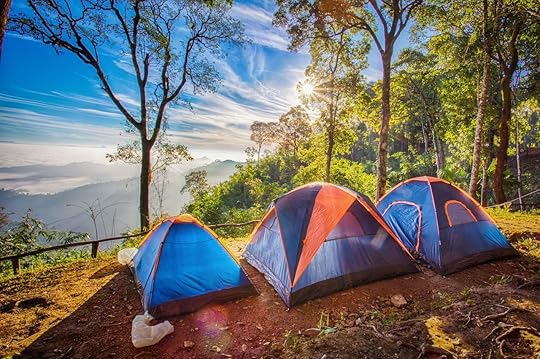
In mid-March, my calendar was color-coded in streaks that screamed “too busy,” and every open weekend said “Camping?!” in hope that the reminder would cause me to wedge it in. Now, every trip, every color is gone, and the only thing that remains is “Camping, question mark, exclamation point.” It’s now slotted for every weekend, since every weekend is an open one.
Cue the mhmms and nods. State parks around the country have reported record visitation. The outdoors are keeping us sane, the saviors of our ruined summer vacations. Whether you were planning to live it up drinking out of coconuts in the Caribbean or slumming it through Europe on a shoestring, whether you camp every weekend or haven’t since you were 12, you are now faced with one mighty prospect: spending your 2020 camping as much as possible.
It sounds kinda great, doesn’t it?
The Great Camping Return of 2020 is poised to be a time when we learn a lot about ourselves, both individually and as a society. New Cheryl Strayeds will hit the trail, kids will come of age in the forests, and maybe — just maybe — the lot of us will start thinking about our individual impact, footprint, germs, and trash. Leave No Trace could become a principle in every American household, the environment and its preservation could rank up there in importance with Netflix, and pro-outdoor legislation could get pushed by the masses with a never-before-seen vigor. Maybe we’ll realize how much we need the natural world. Maybe. At the very least, maybe we’ll all slow down.
Glamping, car camping, wild camping — it’s all healing
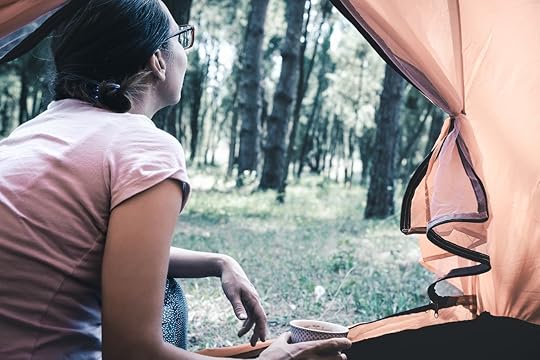
Photo: Beliphotos/Shutterstock
Looking at trees reduces your blood pressure. Not even climbing, owning, or hugging — just looking. And the more you do it, the better off you are. Those who claim to spend 120 minutes or more per week outdoors report feeling healthier. And some studies say that a few days spent outdoors correlates to lower stress levels and lower blood pressure even weeks later. Even apartment buildings with tiny green spaces between them report happier, more sociable tenants than those without the small courtyards. Simply put: We were not built for life indoors.
Whether you’re in a yurt with Martha Stewart sheets, a secondhand hammock between two bur oaks, or not even camping but just walking to work, you’ll still benefit from being outdoors. Studies say 20 minutes outdoors will give you an energy boost as good as a cup of coffee.
Being outdoors also boosts your immune system. Breathing in plant-producing chemicals has been linked to higher white blood cell counts — those bad boys help fight off disease. It gives you a creativity jolt. Backpackers, after being outdoors, absolutely kill creativity tests. You also need vitamin D, and while you can get it in a few foods, the sun is where it’s at.
So don’t judge the glampers, the car campers, the RVers, the hobo backpackers. We’re all doing this for the same reasons. We just want it to manifest in different ways. Just because someone isn’t roughing it like you doesn’t mean they don’t have the same end goal.
Spread your camping net
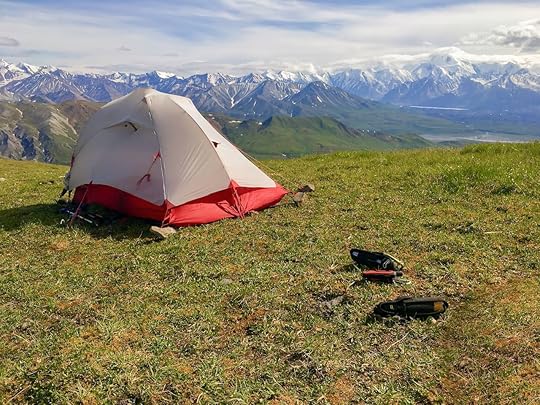
Photo: inEthos Design/Shutterstock
You want to go to Yosemite, to Yellowstone, to your state’s most beautiful park — you and everyone else. With the Great Camping Return of 2020 slotted to absolutely bombard the country’s most sought-after wildernesses, do yourself and these well-loved spots a favor by considering lesser-known areas.
Here’s a few ways to get started brainstorming on how to do just that:
Look at your state map and find places with designations besides “state” or “national park.” National forests (some of which are especially dog-friendly), wilderness areas, wildlife areas, county parks, recreation areas — these are just a few terms to look for. Then research them, as all the info you could need is online.
Look at where you want to go and choose an adjacent swath of public land. Next to Grand Teton National Park is Bridger-Teton National Forest; near the Smokies is the Big South Fork National River and Recreation Area. The arbitrary borders of popular wildernesses are never where the wild actually stops.
Brush up on everywhere you can camp permit-free. There’s an easy way to do that.
Choose somewhere you’ve never heard of. The National Park Service manages 419 units covering more than 85 million acres. The Bureau of Land Management manages 245 million acres, and the US Forest Service manages 193 million acres of land. That’s 523,000,000 acres you’re free to wander — best get started looking at those maps.
It’s more important than ever to be a responsible camper
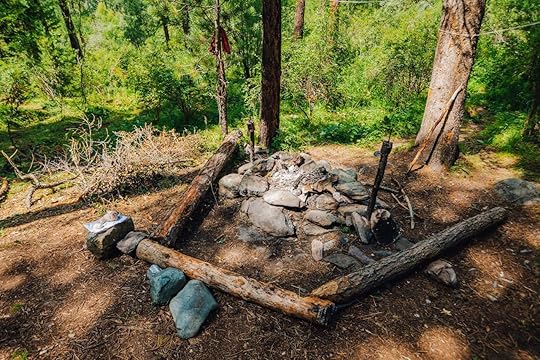
Photo: daniilphotos/Shutterstock
We’ve already seen it happen. State and national parks stay open until they’re swarmed — and then they close. With the lot of us all but shoved into the great outdoors at the same time, learning the ins and outs of responsible camping is at a premium. Let’s not ruin it for ourselves. Here’s what to keep in mind:
Leave no trace. This isn’t just about not littering — though it’s that too. This includes things like human or pet waste (if there are no toilets, bury it six to eight inches in the ground and cover it), fires (put it all the way out, if you are even in a place where campfires are allowed), soapy water (don’t put your dirty, soapy water in a clean water source), and trailblazing (use existing trails). If someone could tell you were there, you’re not doing all you can.
Use existing fire rings and tent spots. This is really just an extension of the above principle — whatever the hundreds of people before you have done, follow suit. Where they’ve planted their tent, so should you. Where they lit a fire, so should you. If there is no existing fire ring, use your camp stove; if there’s no existing tent spot, use the clearest patch of ground you can find.
Obey the rules. No dogs unleashed? Local fire ban in place? Quiet hours at 10:00 PM? Backcountry guidelines say you should stay 200 feet away from the nearest trailhead or water source? Consider it done. And, of course, if you don’t know the rules, that doesn’t mean they’re not there. Learn them.
Leave the wildlife alone. Squirrels or bears, don’t feed them, scare them, try to get near them, destroy their homes, or otherwise disturb them.
Always obtain firewood locally. Bringing in firewood from elsewhere could bring in harmful species, like beetles. If you have some leftover, just leave it for the next person.
Know how to take care of yourself. Don’t be that person that fell off the ledge taking a selfie who needs to call in a rescue crew from the nearest small town. For smaller instances — like cuts or scrapes — be prepared with a first-aid kit and the knowledge of how to use it.
(And, it bears repeating, know how to take care of your fire. Always be sure it’s 100 percent out.) 
More like this Camping How to pitch a tent like a pro on your first camping trip
The post From tents to glampsites, camping will be our savior in 2020 appeared first on Matador Network.

What is sail hitching, how to do it
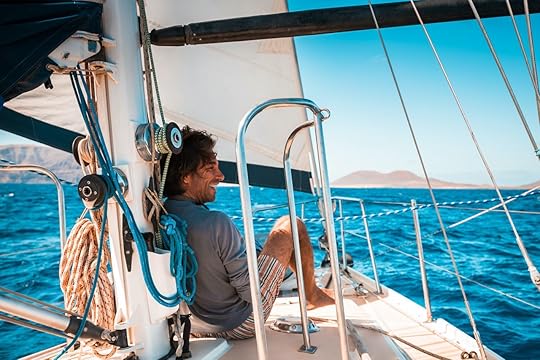
When Cori Davidson’s bike was stolen in Los Angeles, she decided to hitch a ride. She’d cycled south from her hometown of Vancouver and, despite the hiccup, had no plans of stopping.
The first step was hopping on a boat to Mexico as her time in the United States was running out. It would be the first of many boats she’d board over the next few months, yet this initial crossing was the only one that came with a receipt.
Davidson disembarked in Ensenada, a port city on the coast of the Baja California peninsula. There, with only loose plans and an appetite for adventure, she decided to try sail hitching.
Davidson was no stranger to thumbing rides. She’d hitchhiked many times before, seeing much of North and South America that way. This would be different, however: She was to sail across the Pacific Ocean in the company, and cabins, of strangers.
Travelers she’d met in South America had turned her on to the concept, which surprised her at first. As it turned out, though, finding a ride was easier than expected.
A quick Google search yielded a website called Find a Crew, an online network that connects boat owners with crew. Expertise is not required to become a crew member; while comfortable on the water, Davidson did not have extensive sailing experience when she arrived in Ensenada.
Finding a match is like using a dating site. Cruisers and crew members fill out profiles based on specifications like where they’re going, what they’re looking for, and various travel preferences.
It’s an easy site to navigate, but for a solo female traveler, much like a single woman on a blind internet date, it was not as simple as finding someone headed in the same direction. Many of the cruisers are older men, and many of their profiles specify female crew, gauging things like comfort with nudity and interest in starting a relationship among other preferences.
A seasoned solo traveler, Davidson was not deterred. “If you’re a single female traveler,” she says, “You already know the rules. You already know the risks.”
Yet she also recognized that the stakes are higher at sea.
“You’re getting on a boat with somebody. You’re not gonna be able to escape this person, so you need to screen them,” she says. “You need to tell people where you are. Maybe get a satellite phone. That’s really expensive, but maybe it’s something to look into for safety.”
In the end, Davidson found a sailor named Jacob. He was around her age, both in their late 20s, and was planning on sailing to Australia. They met in Ensenada, and shortly after, sailing to Australia became Davidson’s plan too.
They were joined by another hitcher, Ben Migirditch, who’d landed in Baja California from North Carolina via San Diego. The three-person crew spent as many weeks getting acquainted while traveling down the coast of Mexico before making the jump across the Pacific. Before the point of no return, they made a final stop in La Paz, picking up another hitcher, Alex, who would fill the fourth and final bed of Jacob’s 33-foot monohull on a 33-day sail to French Polynesia.
Though Migirditch acknowledges that his cavalier attitude around non-sailing-related safety is a male traveler’s privilege, he nonetheless stresses the importance of finding the right cruiser.
“There are two types of sailors,” he says. “The old salts who know every inch of every boat and the imposters who have more money than sense. You want to get on board with the salts. They teach you more, they know how to get out of a pickle, and they’re typically less stressed out.”
Davidson and Migirditch, who continued hitching around French Polynesia together after Jacob’s Australia plan was unexpectedly cut short, met several types of captains in their travels. The sailing community in the islands was tighter knit, and the use of the internet was more scarce. Word of mouth replaced scanning profiles as their means of sourcing rides.
Over the next few months, the two crewmates hitched on a superyacht, helped nanny on a family boat, and holed up with lifelong sailors, among others. In only one instance did they board a boat with a captain, a hot-tempered Dane, whom they did not trust.
They jumped that ship, metaphorically, after just one day. Suddenly in need of a ride, Davidson and Migirditch found refuge with a captain named Guy and his partner Melissa, who they’d met in a bar on the island of Hiva Oa and, at the time, turned down an invitation to join. They encountered them again only fortuitously upon leaving the Danish captain in Fakarava.
Yet even in the best company, sharing close quarters with little privacy for days or weeks at a time can be stressful, particularly at sea. “Everything while you’re out cruising is magnified,” says Guy Stevens, a lifelong sailor with a background in sociology. “There’s nothing in the cruising world that’s ever an emotional two. It’s either a nine or a zero.”
Still, despite the inevitable challenges, Stevens notes that bringing Davidson and Migirditch aboard made that year’s cruising season as rewarding as it was. In part, he attributes this to two policies he enforces on his boat: Always give the other person the benefit of the doubt, and practice what he calls “tempered radical honesty.”
“When something happens and you’re pissed off about it,” says Stevens, “you’re allowed to take some breaths, but then you gotta tell the other person … Because if you let anything fester on a 46-foot boat, pretty soon it gets big enough that nobody can be in the boat.”
This is all the more true, according to Davidson, when that boat starts rocking.
“The ocean is a hostile place,” she says, recalling a bad squall in her first three days out from Ensenada. The rudder on Jacob’s boat broke during the storm, and without a secondary rudder system, they might have crashed into the shore. Had they been farther from the coast, they might have been lost at sea. “That’s the thing about the ocean. It can just turn on you.”
Yet when everything is smooth sailing, there’s also the opposite challenge: a lack of excitement.
Activities are limited on the open sea. Entertainment like reading and crafting may not be possible depending on the conditions, and as essential as carving out personal time and space is, you can only spend so much of that alone time alone with your thoughts.
For this, Davidson recommends headphones. “Music is so important,” she says. “We were out on the water for 33 days. We got really bored. We had a couple of movies, but you really want your own music, audiobooks, your own camera.”
Routine was also crucial for maintaining sanity on the long journey across the Pacific, according to Migirditch. “Every day we’d wake up with the sun and make coffee on our gimbaled kerosene stove … Time slipped by in strange ways, but each day was punctuated by meals. Morale at sea comes straight from the kitchen,” he says.
Cooking and cleaning are among the duties sail hitchers can expect to barter for their room and board. Every boat is different, but work exchange is the backbone of sail hitching.
With Jacob, hitchers pitched in a little bit of money and helped with daily tasks. With Stevens, the only agreement was to drop off and pick up him and his partner from various scuba diving sites. Nonetheless, Davidson and Migirditch took it upon themselves to do extra work, such as washing every single dish for the entirety of their stay.
“It’s not glamorous,” says Davidson. “Maybe on a superyacht, but even then our work was kinda grueling because typically you’d have a four- to six-hour shift at night.”
Among the biggest incentives for cruisers to take on crew members is to help with night watch. Someone is always awake on a boat to make sure it stays on course while the others sleep.
The navigation itself is simple. “It’s like a video game. Now everybody has GPS systems, backup GPS systems, weather charts, so you’re basically just looking at a screen and making sure you’re following on the dotted line,” says Davidson, who notes that it’s the fatigue and monotony that make night watch challenging, calling it a sort of “zombieland.”
Migirditch agrees. “It can be lonely, difficult, and plain boring,” he says. Yet those night shifts also collectively register as one of his favorite memories. “In the middle of the ocean there is no light pollution. There is no sound pollution. There is hardly a smell other than the salty breeze … It was transcendent to imagine the navigators that came before me, who gazed at those same stars and cruised through those same glowing waves.”
For both Davidson and Migirditch, sail hitching was an experience they cherish, one they would do again under the right circumstances at the right time in their lives, and a type of travel they would recommend to anyone approaching it with an honest understanding of what they’re signing up for. As moving as it was, both warn against romanticizing the experience.
For Stevens, who has no interest in creating a Find a Crew profile, hosting Davidson and Migirditch was an opportunity to reclaim the sense of community he’s seen dwindle in the cruising world in his decades at sea. Despite expressing some reservations, when asked what he would say to cruisers considering bringing strangers aboard, his advice was simply, “Do it.”
Finding a boat may be the easiest part of the sail-hitching process. Packing smart helps with acclimating: Gloves reduce the risk of rope burn, layers keep you warm when it’s windy, avoiding cotton will keep your clothes fresher against the salt air, bringing waterproof gear and wellies is only logical. But, above all else, the most important thing to bring is a good attitude.
If there’s one theme that runs throughout sail-hitching stories, it’s that sail hitching is intense: intensely exciting, intensely dull, intensely intimate, intensely lonely. It’s intensely different from any other way a traveler will experience the world.
But when it goes off without a hitch, sail hitching quite literally opens up a world of possibilities. 
More like this Beaches + Islands Exploring Turkey’s stunning Mediterranean coastline by boat
The post Hitchhiking at sea is one of travel’s great adventures appeared first on Matador Network.

NASA captured California's poppies

Every spring, locals and travelers flock to the Antelope Valley California Poppy Reserve to marvel at the blooming sea of wildflowers, most well-known for the bright orange poppy. Creating a stark contrast between its vibrant petals and the earthy tones of the surrounding land, the poppy blossoms are truly a sight to be admired. Since this year nature-lovers can’t physically visit the poppies, NASA’s Armstrong Flight Research Center — the park’s next-door neighbor — captured and shared satellite images of the spectacle.

Photo: NASA
On April 14, the Operational Land Imager on the Landsat 8 satellite was able to capture the delicate movement of the poppy petals in a series of stunning photos. The poppy actively responds to weather conditions such as sun, wind, and rain. With the rain in Southern California exceeding expectations by four inches this year between March and April, the 2020 bloom appears even more vibrant and is expected to last longer than usual.
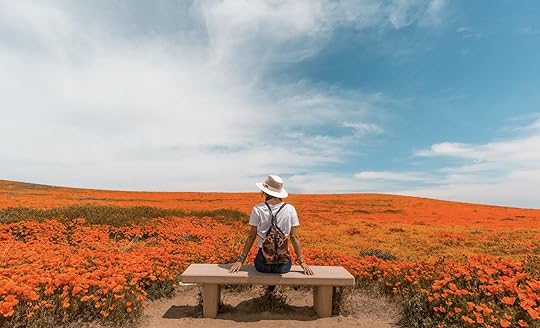
Photo: Scott Sporleder
Although the poppies have been drawing in visitors, the park is also abundant in purple bush lupines, forget-me-nots, cream cups, and yellowray goldfields.
To watch the bloom from home, you can tune in to the Antelope Valley California Reserve live cam or go on a seven-minute guided virtual tour led by State Park Interpreter Jean Rhyne. 
More like this News The California poppies are blooming, safe from the trampling of Instagrammers
The post California’s poppy bloom is so bright it can be seen from space appeared first on Matador Network.

May 11, 2020
Future of air travel

No one can look ahead to the post-pandemic world and claim to know what it will look like. There are, however, two certainties: People will be eager to travel again, and travel itself will be very different for quite some time. Exactly what the airport experience will look like is anyone’s guess, but we already have some clues. Airports and airlines know that the only way to get people traveling again is to reassure them that the experience will be safe. The only way to do that is by completely overhauling sanitation measures, both onboard flights and in the airports themselves. The result is likely to be a completely changed airport experience designed to dramatically reduce the number of passenger touchpoints.
Flight check-ins, usually a fairly automatic, mindless process, will have to be completely reimagined. Whether it’s checking in at the desk with a human being or using a kiosk, these are touchpoints that present a serious sanitation risk. That’s why the World Travel and Tourism Council is reporting that major airports like JFK, Heathrow, and Singapore Changi will probably include mostly online check-in. All-biometric check-in systems will likely become ubiquitous across many major airports, as well as methods for bag checking that don’t involve airport staff. This could also involve a UV disinfection tunnel for the luggage itself after it’s dropped off.
Indeed, some airports have already introduced new disinfection methods. According to The Telegraph, “it may sound futuristic, but UV sanitation is likely to become commonplace at the world’s airports. London Heathrow says it is to begin trialing the process for its security trays.”
More important than disinfecting luggage and belongings, however, will be making sure that passengers themselves are healthy. Airports can be expected to install hand sanitation stations and even thermal scanning to check crowds for fever-grade temperatures. Hong Kong International Airport is testing a full-body disinfection booth developed by Cleantech, which would sanitize passengers with an antimicrobial coating that can remotely kill germs. It’s also using cleaning robots to disinfect public areas.
Much like check-in, the boarding process will also likely become touchless. Facial recognition software is already being used in some US airports for international flights, and many airlines have introduced strict new sanitation measures.
In the aircraft, electrostatic spraying of cabins, blocked middle seats, and protective equipment for the cabin crew will likely be commonplace, while a growing number of airlines are now requiring passengers and crew to wear masks.
Air Canada recently introduced an initiative called Cleancare+, including new cleaning protocols for aircraft and mandatory temperature checks for all passengers before flights. Perhaps even more reassuring, the airline guarantees that it will not sell the seat directly behind you.
Samuel Elfassy, VP of safety at Air Canada, expressed optimism about the situation to Bloomberg. “This creates incredible opportunity for innovation,” he said. “The post-pandemic world will include screening technologies that detect vital signs and provide a better understanding of what an individual’s health looks like, and whether or not that person should be flying.”
Airlines are also getting the word out about their HEPA air filters — an air filtration system used by all airlines. The system removes impurities from the air, making plane cabins one of the safest places for you to inhale. According to the EPA, HEPA filters catch “at least 99.97 percent of dust, pollen, mold, bacteria, and any airborne particles.” It’s a common misconception that airplane air is circulated throughout the cabin, so you’re constantly breathing in other people’s germs. Because HEPA filters the air every three minutes, however, the vast majority of contaminants are removed. Dispelling the myth about airplane air, and educating passengers about HEPA filters, will be crucial to restoring confidence in air travel.
Upon arrival, passengers can expect to undergo some kind of health check, whether it’s a temperature screening, a blood test, or even being asked to present proof of immunity or vaccination. In Hong Kong and Vienna, international passengers are already being given blood tests before being allowed to enter the country, and in Dubai passengers receive blood tests before departing.
Just because travel is changing, that doesn’t mean it’s all for the worse. With heightened sanitation measures comes more peace of mind and less anxiety about passing through the airport. Jon Ostrower, editor-in-chief of The Air Current, told The Harvard Business Review, “I think all of these changes will be positive from a passenger’s point of view. But on the flip side, I suspect flying may become more boring for a while, as airlines try to recover financially.” 

More like this: What are airplane HEPA filters and do they make cabin air safe?
The post The future of air travel is uncertain, but here’s what it might look like appeared first on Matador Network.
Dunkin’ Donuts stops using Styrofoam

Dunkin’ Donuts, welcome to the 21st century.
While seemingly every other quick-service national food chain did away with polystyrene foam — or Styrofoam, the brand name most people call it — Dunkin’ held fast to its white-foam roots. The stuff kept coffee hot and our hands cool, and by gosh it somehow made that cup of coffee, cream, and all the sugars they put in your Xtra Large coffee taste… like Dunkin’.
But this week Dunkin’ finally announced it will be 100 percent free from polystyrene foam cups as soon as current supplies run out. The foam cup kings have switched to a double-walled paper cup made from paperboard that’s certified to the Sustainable Forestry Initiative Standard. Dunkin’ says it will have the same temperature-regulating properties as the old foam cups.
The move is expected to remove a billion polystyrene cups from landfills annually. Considering it took the average Dunkin’ cup 50 years to biodegrade, that’s a pretty huge number.
“Sustainability remains a key priority for Dunkin’’,” Scott Murphy, Dunkin’s America’s president, said in a press release. “We will build on our momentum and do our part to take care of the world around us because it matters to us, our franchisees, our guests, and our communities.”
In addition to eliminating foam cups, Dunkin’ is moving to fully recyclable coffee cup lids as well, replacing the old polystyrene ones with #5 polypropylene. These lids can be recycled in any city that offers #5 recycling. Combined with the new cups, Dunkin’ is expecting to remove 19 million pounds of polystyrene waste from landfills every year.
You may still get a foam cup next time you run in for coffee since many franchisees still have existing boxes of the old cups they’re not in a position to throw away. But Dunkin’ distribution centers will no longer be sending them out, so if for some reason you enjoy the flavor of coffee in a cup that’ll still be here in 2070, you should probably act now.
Hopefully, the move signifies more restaurants are moving away from environmentally harmful packaging, especially as consumption of takeout and delivery foods has become the norm over the past couple of months. Dunkin’ is finally doing its part to help reduce waste in landfills, and America can run on it feeling a little less guilty. 

More like this: The 8 most amazing, sustainable restaurants in the world
The post Dunkin’ Donuts finally replaced its foam cups for more sustainable paper ones appeared first on Matador Network.
Matador Network's Blog
- Matador Network's profile
- 6 followers



